
Paris Fashion Week: five Chinese menswear designers prove they can compete with the best on the world’s biggest stage
Whether it was a collection inspired by the last Chinese emperor, bomber blazer hybrids, reflections on Americana or a doomsday scenario in armoured suits, these designers lit up the Paris catwalks with autumn 2018 collections
China used to be known, unfairly, as a land of derivative design. No longer: a new generation of designers is shining brightly on the international stage.
Having taken London by storm – GQ China supports emerging Chinese talent there – and before hitting New York, all eyes were on Paris Fashion Week, where menswear designers – whether from China, Taiwan or of Chinese descent – blazed a creative trail.
They are following a similar trajectory to Japanese and Korean designers in the past, and 2018 is set to bring even more success if the reaction to their shows at Paris Fashion Week Men’s is anything to go by.
The next big thing in Chinese fashion, in a pink Mao jacket – Pronounce take big strides at London Fashion Week Men’s
While Sean Suen and Yang Li, Brandon Sun, Angus Chiang, and Shangguan Zhe, are not the first Chinese designers to grace the Paris haute couture party (that honour belongs to Frankie Xie and his label Jefen, back in 2006), they lit up Paris with their autumn 2018 collections.
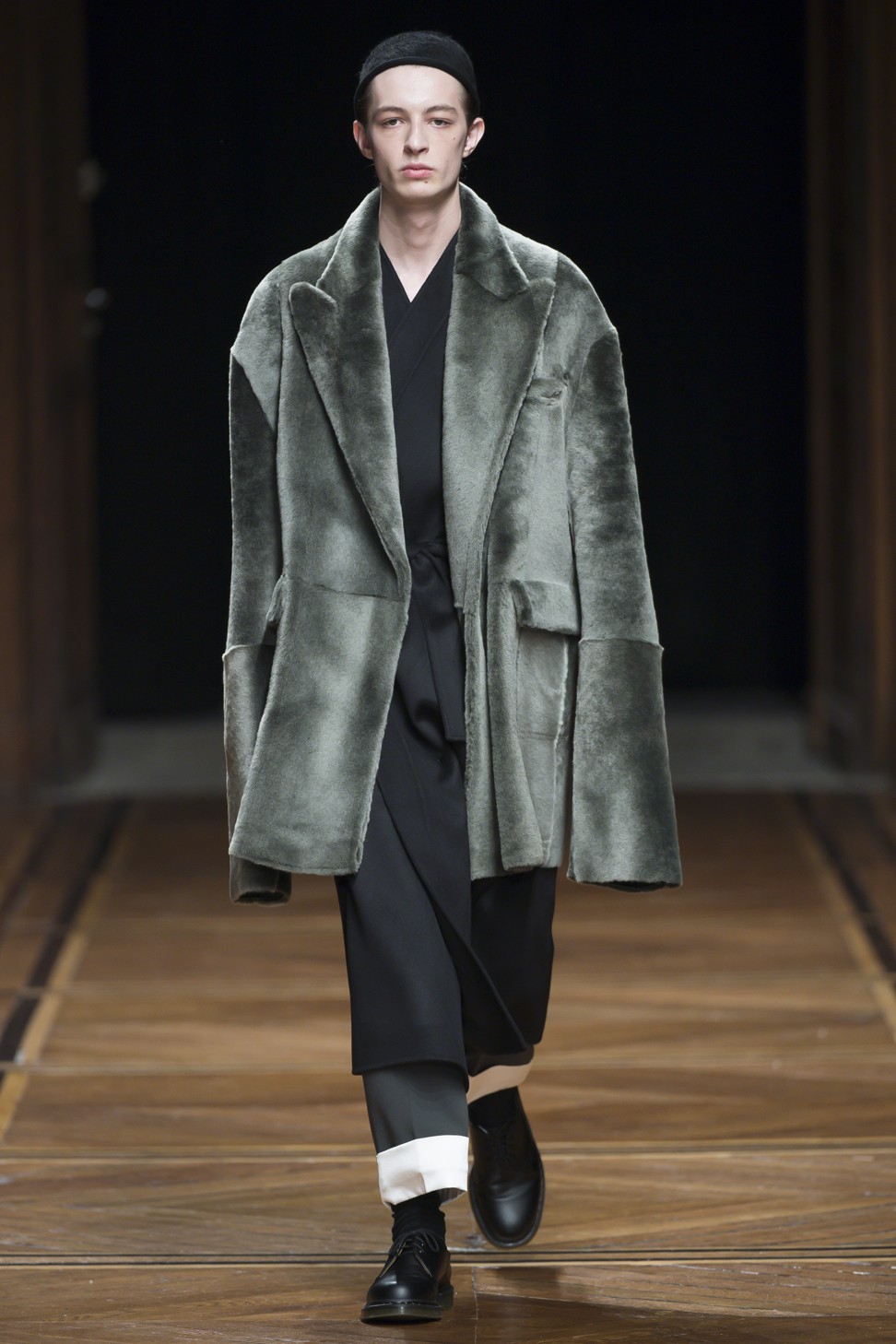
Sean Suen
“Any designer would want to show in Paris. This is only the start of the story for Chinese designers reaching out to a global stage,” said Sean Suen during a preview of his collection on January 18. “We still have a lot of work to do, many things to learn.”
Haute Couture Week: Christian Dior designer Maria Grazia Chiuri plays on the illusion, the fantastic and the dreamy
Born in Chongqing, and after some time in Shenzhen and Shanghai, Suen is now based in Beijing and his style blends East and West influences.
With a background in fine art and graphic design, Suen launched his namesake brand in 2012 – and soon landed the support of GQ China. His first collection shown in Europe, which blended sophisticated tailoring with a brash palette of contemporary metallics, was one of the highlights of the London Collections Men Autumn 2016 schedule.

“When I moved to Paris, I almost felt like I was following a hype, without really having a plan,” he recalls, and quips that it may be time to look at putting down more permanent roots in the French capital. “A lot of things happen here; it’s a big, exciting stage to show what you want to show.”
For autumn 2018 he presented a collection inspired by the last Chinese emperor, Aisin Gioro Puyi. Standouts were a plush astrakhan-print bomber jacket, a boiled wool jacket with a pattern resembling rubble, and a bare black suit.
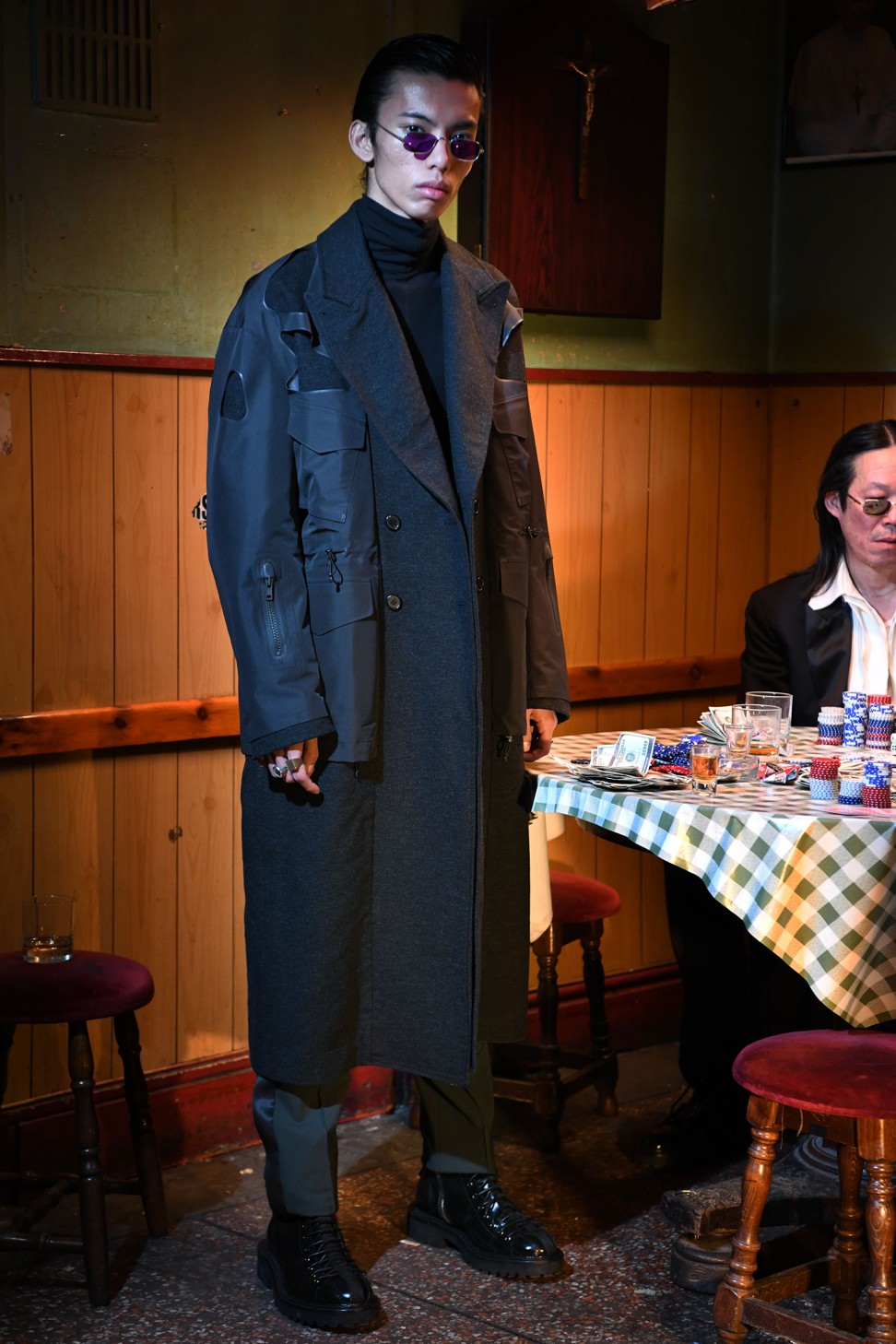
Yang Li
London-based Yang Li has built a reputation for couture-level craftsmanship. Despite being only 31, he is one of the more established Chinese designers on the Parisian scene, having debuted there in 2012 with womenswear.
Born in China, Li grew up in Australia. He went to London in 2007 and enrolled in the Central Saint Martins School undergraduate programme. Raf Simons came calling and Li left the programme early to start working for the influential Belgian designer.

To Li, the emergence of Chinese designers in Paris is a natural evolution in a world where communication is easy. “Fashion itself has become less niche and therefore attracts a lot of energy and talent, especially for previously fashion-starved China,” he says.
His autumn 2018 menswear collection, with as a title The Gambler, is the final chapter of a fashion trilogy based around cinematic villains, and features tailored pieces influenced by eveningwear, and accumulations of prints, textures and clashing colours. Full-on, but exactly the effect Li was going for.
Best so far has been his outerwear – such as an emerald coat, and some bomber blazer hybrids – and shirting with cunning cuts and bold detailing in the form of raw edges, embroidered card suits, or scarf loops.
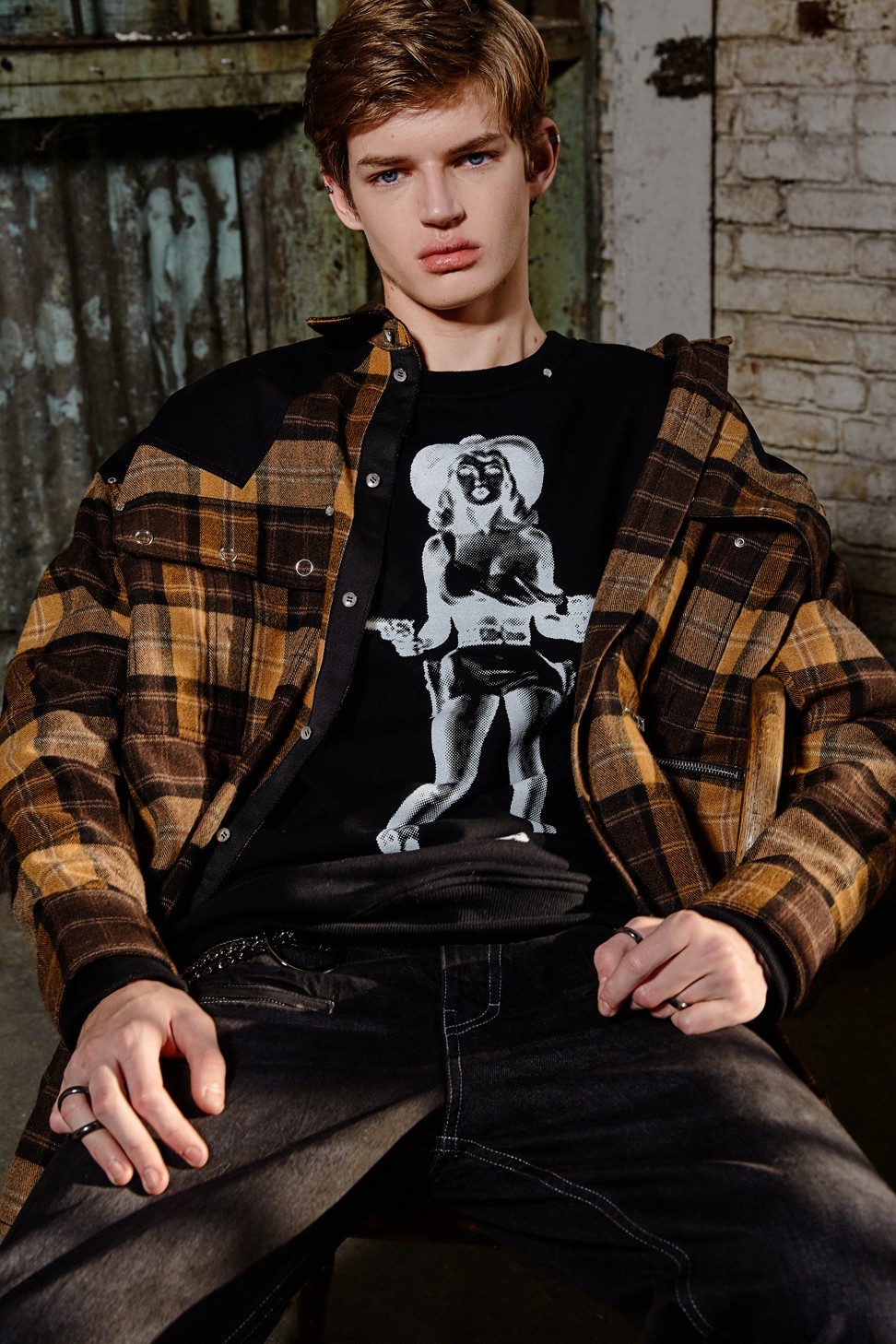
XB OFCL
While Brandon Sun is American, he is proud of his heritage. “It’s so important. Growing up in America, being Asian, you’re always a bit different, not 100 per cent assimilated. On one hand you’re living life as an American at school or everyday life, and then you go home to a different culture,” he says.
Rather than being a weakness, this outsider position strengthened his identity as a Chinese-American designer.
He graduated from Parsons School of Design in 2006 with the “Designer of the Year” award, previously held by the likes of Marc Jacobs and the Proenza Schouler duo of Lazaro Hernandez and Jack McCollough, and went to work for furrier J. Mendel.
Why street style is over, in the eyes of one of its original stars, and the menswear trends he is seeing in Hong Kong and Japan
There he went from assistant to being in charge of tailoring, ready-to-wear and furs, before moving to Oscar de la Renta as design director for the label’s furs. His namesake brand launched in 2011 but was later put on hold.
These days, he is busy working on XB OFCL – shorthand for Excommunicated Boys Club, his menswear collective.
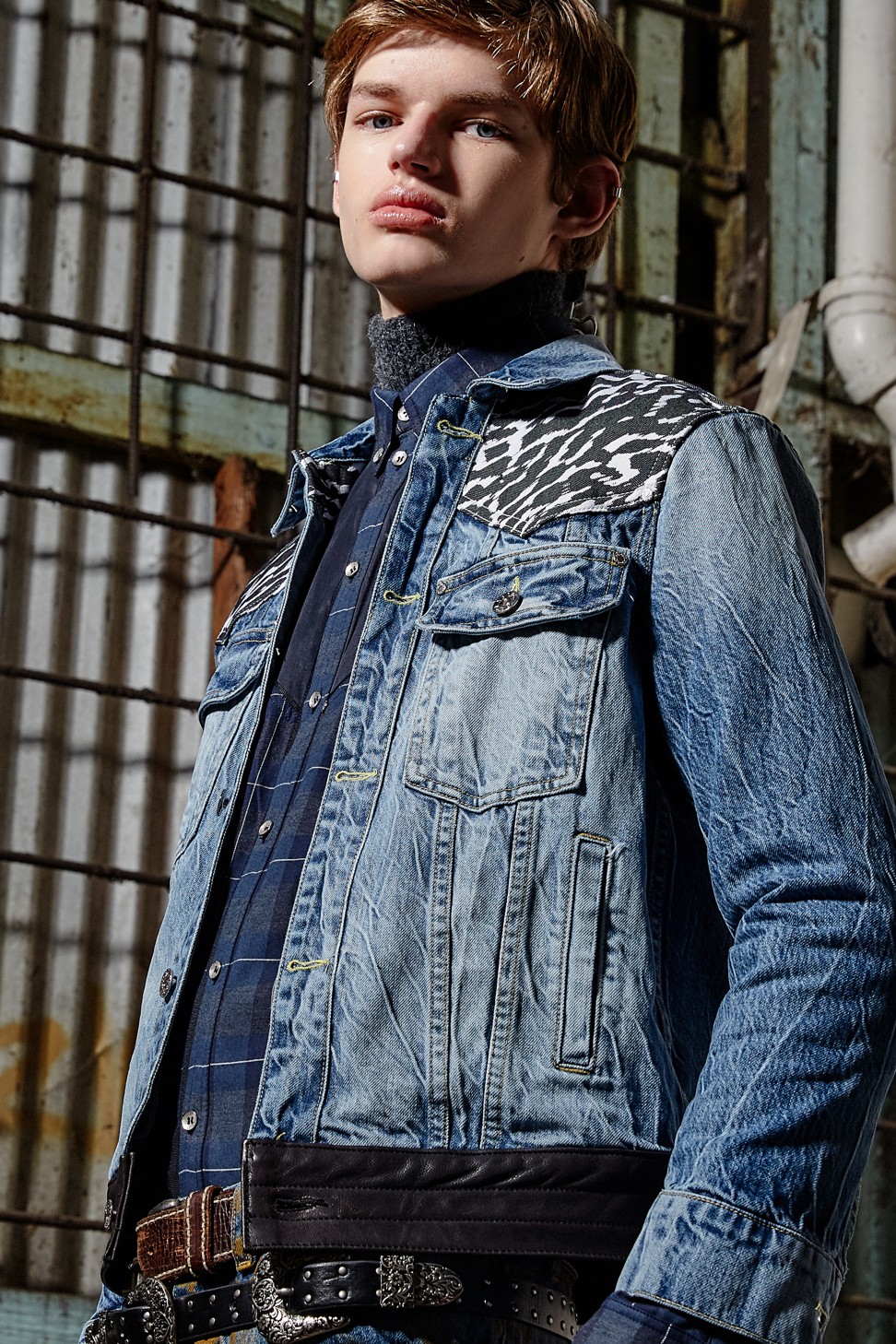
His autumn 2018 collection is a reflection on Americana, New Generation feminism and what it means to be American in these troubled times.
“What it means has changed recently, and simultaneously. Being that macho, cool and in control cowboy is no longer relevant,” Sun said in his Parisian showroom, going through racks of cowboy shirts patchworked from Japanese plaids and Cupro. “The idea of importing key elements of the garments speaks to who we are. As Americans, we’re all imported.”

Angus Chiang
“Paris is a place to grow,” Angus Chiang says backstage after his second show inspired by Taiwan, his homeland. A finalist for the 2017 LVMH Prize just two years after launching his label, Chiang trained at Shih-Chien University, in Taiwan, from where he graduated in 2013, scooping the International Show Award at London’s Graduate Fashion Week.
10 Chinese celebrities who are rising luxury fashion influencers
For his premiere in Paris, Chiang imagined a bike tour of the island, complete with cartoonish, form-fitting Lycra outfits and lurid sponsor badges.
His autumn collection, called “Put the Pedal to the Metal”, had him revving up his creative engine and speeding ahead with a vision of everyday life on the island in ’90s club-kid electric hues, wide raver trousers and motorsports wear.
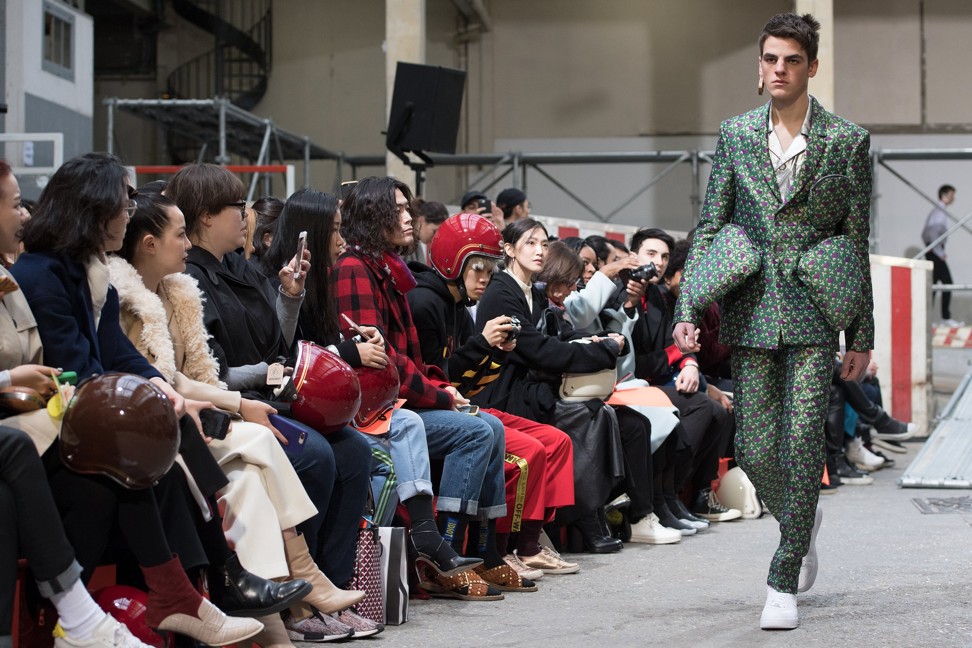
His models sported sneakers embedded in inflatable bumpers, a crossover collaboration with Nike in honour of the 35th anniversary of the sports brand’s Air Force 1 line.
He says the rise of Chinese designers is a sign of a change in the market but also of cultural maturity. “The change of generations is a factor in the emergence of a Chinese designer wave, but it’s about bringing our cultural specificity forward,” Chiang says.
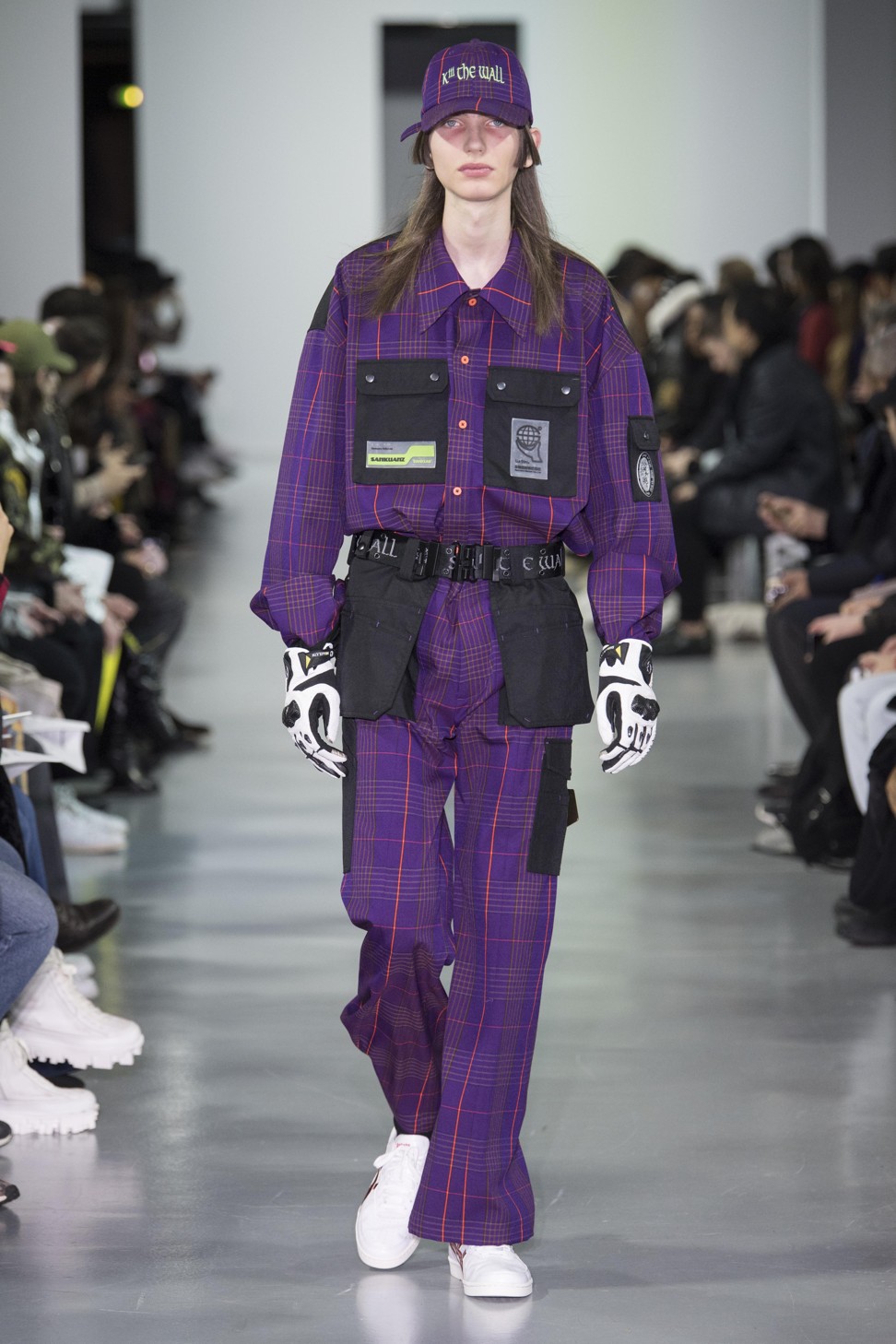
Sankuanz
“China used to be very traditional, with formal dressing and embroideries, and now [the new generation] is growing up. Culture is blowing up, and it’s new,” Shangguan Zhe, founder of label Sankuanz, said after his show on the last day of the Paris menswear week. What Paris is experiencing is a purely home-grown, grass roots version of underground youth culture.
If the world were ending, Zhe would be the designer to turn to. For his autumn 2018 show in Paris, Zhe presented armoured suits with soft plating – extreme-sports-worthy tops and pants cut from Cordura nylon and other hi-tech fabrics.
“[Autumn 2018] is about figuring out what to do for your life, fighting for it, and to figure out the physical obstacles and anything that may overwhelm you,” he said.
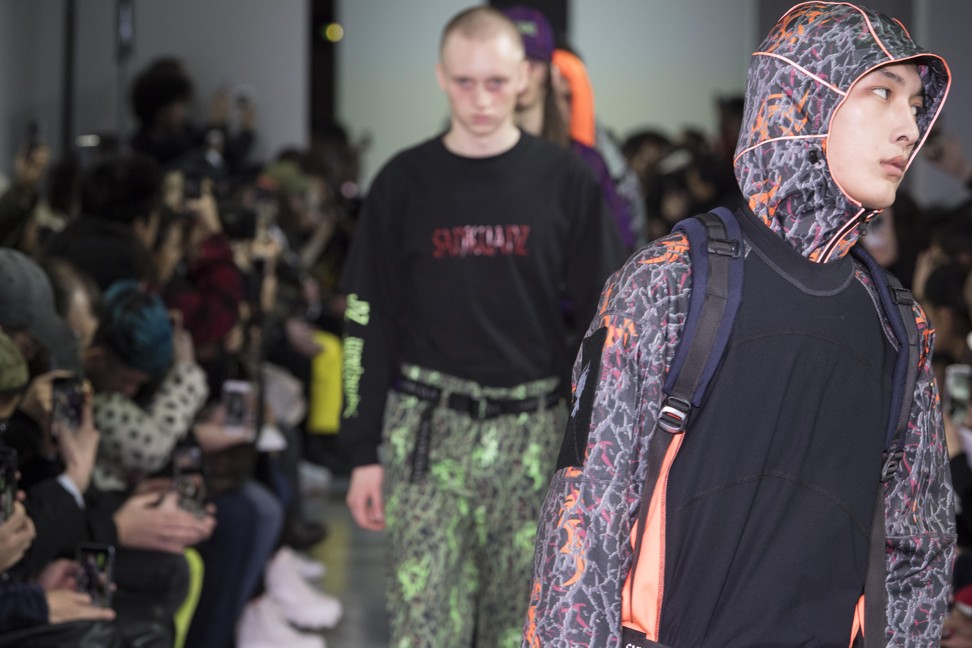
Born in Changting, Zhe moved to Xiamen, a bustling yet laid back island city on the Fujian coast, halfway between Shanghai and Hong Kong, to pursue a course in visual communication and advertising at Xiamen University.
What’s new in Xiamen, southern China’s unlikely fashion hub, as more designers flee city stress and join creative class on coast
He launched Sankuanz in 2008 in Xiamen with little funds but plenty of ideas, and rapidly built a solid following with a recognisable blend of military and utilitarian active wear, influenced by his eye for punchy graphics.
The Chinese coastal city has turned into a hub for a younger generation fleeing crowded urban centres in search of quality of life and creative havens, and he is now seen as a senior member of the “Xiamen Fashion Gang.”
After being shortlisted for the 2015 LVMH prize, he moved his show to the City of Lights. “It’s the centre of the fashion world, so showing in Paris is about bringing something from China to this platform as the new generation from China tend to do, and then bring something back home too,” he says.

